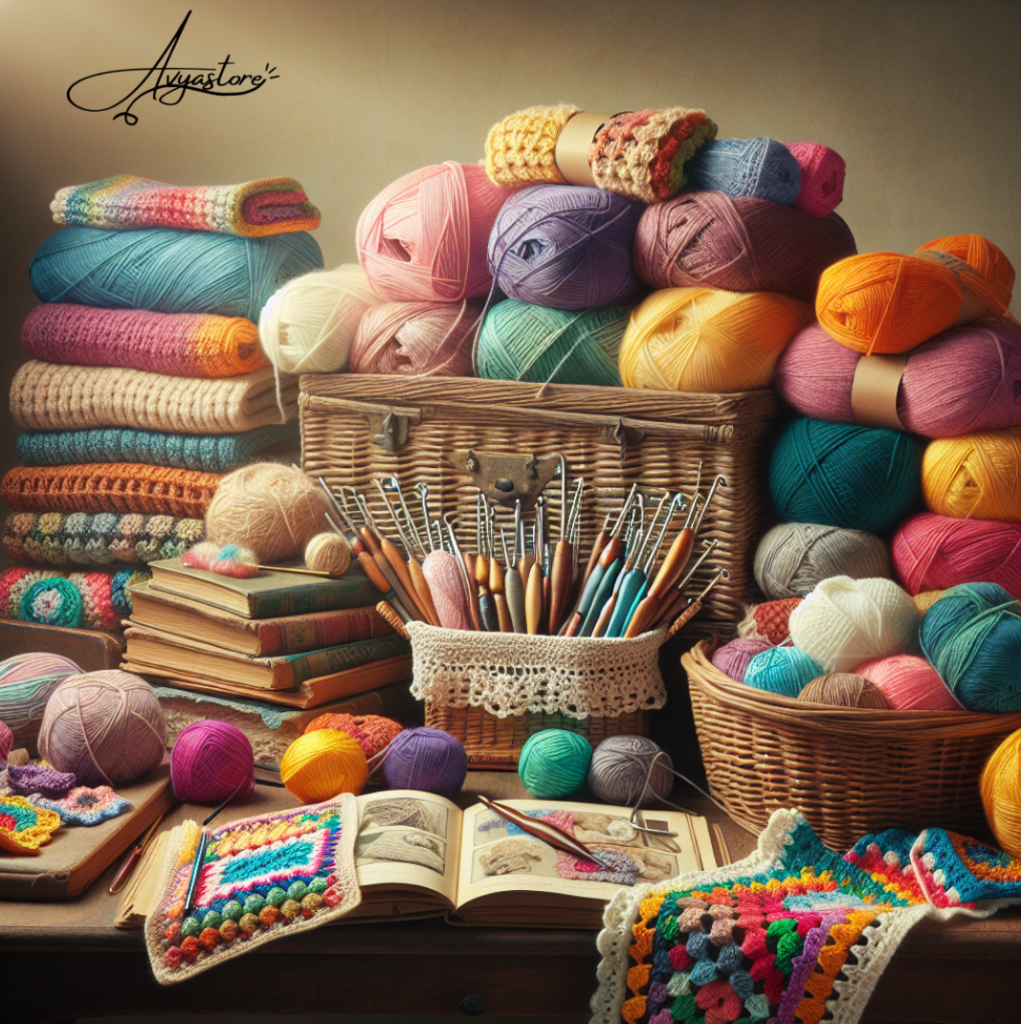Whether you’re a seasoned crochet enthusiast or just starting, managing your crochet inventory can make a big difference in how smoothly your projects go. Keeping track of your yarns, tools, and patterns helps you stay organized, avoid duplicate purchases, and find exactly what you need when inspiration strikes. Here’s a guide to help you keep your crochet inventory in top shape:

Yarns: Start by sorting your yarns into categories. You can group them by type (cotton, wool, acrylic, etc.), weight (fingering, DK, worsted), and colour. Using clear bins or jars allows you to see what you have at a glance, which can spark ideas for new projects.
1. Categorize Your Supplies
Patterns: Organize your patterns into a digital or physical folder. You might categorize them by project type (scarves, blankets, toys) or by skill level (beginner, intermediate, advanced). Digital options like apps or cloud storage can keep everything accessible and easily searched.
Tools: Arrange your hooks, needles, and other accessories in a dedicated space. Consider grouping them by size or type and use small containers or cases to prevent them from getting tangled or misplaced.
2. Use Inventory Software
Apps and Software: Leverage technology to keep track of your supplies. Several apps are designed for craft inventory, such as Craftsy or Ravelry. These tools can help you monitor what you have, and what you need, and even track ongoing projects.
Spreadsheets: If you prefer a DIY approach, a spreadsheet can be a great tool for tracking your inventory. Create columns for item type, quantity, purchase date, and cost. This method provides a clear overview and makes updating and reviewing your inventory easy.
3. Label Everything
Yarns: Clearly label each skein with its type, weight, and colour. This prevents confusion and helps you easily identify the right yarn for your next project.
Patterns: Keep your patterns organized and labelled with important details such as project type, difficulty level, and any special notes. This will save you time searching for the right pattern and help you avoid duplicates.
Tools: Label your storage containers and drawers to streamline your crafting process. Being able to find your hooks and accessories quickly can make a big difference in your workflow.

4. Track Usage and Replenishment
Project Tracking: Maintain a log of your ongoing and completed projects. This record can help you understand which materials are used frequently and which ones you might be overstocked on.
Reorder Points: Establish a system to monitor when it’s time to reorder supplies. This could be based on the amount of material used per project or your average consumption rate.
5. Maintain a Clean and Organized Workspace
Storage Solutions: Invest in shelves, bins, and drawer organizers to keep your supplies tidy. Clear containers are particularly useful for quickly locating what you need.
Workspace: Dedicate a specific area for your crochet projects and supplies. A well-organized workspace not only improves efficiency but also enhances your crafting experience.
6. Regularly Review and Update Inventory
Audits: Periodically review your inventory to ensure everything is current. This helps you identify any excess supplies or missing items, so you can adjust your purchasing and usage accordingly.
Updates: Adjust your records whenever you buy new supplies or complete projects. Regular updates keep your inventory accurate and useful.
7. Consider Seasonal and Trend Factors
Seasonal Yarns: Be mindful of seasonal colours and yarns. Stocking up on seasonal trends can help you create timely and relevant projects.
Trends: Stay informed about crochet trends and adjust your inventory to match popular styles and materials. This is especially important if you sell your creations and need to meet market demand.
8. Budget Wisely
Cost Tracking: Keep track of your spending on supplies to manage your budget effectively. Knowing the cost of materials helps you plan projects and avoid overspending.
Sales and Discounts: Watch for sales, discounts, and bulk purchase opportunities. Smart shopping can help you save money and stock up on essentials.
9. Incorporate Feedback
Customer Feedback: If you sell your crochet items, listen to customer feedback to adjust your inventory based on demand. This helps ensure you’re meeting your customer’s needs and preferences.
Personal Reflection: Reflect on your usage patterns and adjust your inventory to suit your crafting habits. This can help you avoid buying unnecessary items and focus on what you truly need.
10. Enjoy the Process
Creativity: Use inventory management as an opportunity to get creative. Personalize your storage solutions and make the process enjoyable. An organized space can enhance your crafting experience and inspire new ideas.
By staying organized and keeping track of your crochet supplies, you’ll find that your crafting process becomes smoother and more enjoyable. Whether you’re working on personal projects or running a crochet business, effective inventory management is key to a successful and fulfilling crochet journey. Happy crocheting!

1 Trackback / Pingback